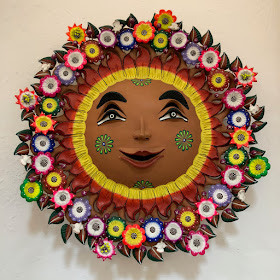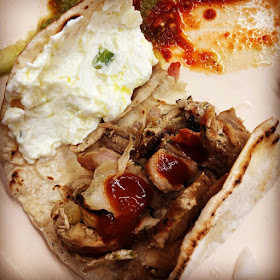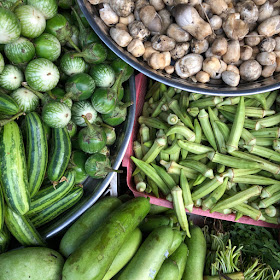Hard to believe, but this is the 7th call for my annual mentorship program. Should you be interested? It's often hard to know where a career in the museum field might lead you--and how to navigate the world of co-workers, organizational structure, and larger issues in the field as a whole. If you think that might be helpful--maybe this is for you.
All kinds of colleagues have been mentees over these seven years: educators, curators, archivists, directors, people in the United States, people working globally, students in Ph.D programs or just finishing a museum studies program, mid-career folks, people looking for a career shift or looking to make the most of where they are. All kinds of people.
This week, I reached out to previous mentees to find out how they viewed the experience after a bit of distance. Here's what some of them said:
"I think for me the biggest takeaway from our conversations was the encouragement to write, and this summer I had a narrative essay published in FWD: Museums, a peer-reviewed journal published by the Museum Studies and Exhibitions program at the University of Illinois at Chicago."
"It taught me how to approach mentoring others... I’ve gotten involved with the mentoring program that EdCom is doing. I’ve had a couple of mentees in that program as I “pay it forward.” "
"For me, as a new museum professional at a small museum that, in some ways, was isolated from mainstream museum practice, it was helpful to have someone removed from the situation to discuss challenges with. It was also great to have someone knowledgeable about the museum literature to discuss issues with - I knew I was getting advice that was grounded in best practice, as well as solid ideas on where to look for further resources. The fact that the meetings were regular and were things I didn't have to initiate meant that I was forced to find time in my schedule for reading and reflection - things that should be an integral part of the work of anyone new to cultural heritage work, but a part of the work that's hard to find time for in an entry-level job."What do I gain from it? Even though I now have "network" in my official job title, it's always been a key part of the way I approach my work. I love new ideas and new perspectives--these monthly conversations provide that for me as well as for mentees. Approaching work in a spirit of generosity repays itself in so many ways and helps expand a community of museum colleagues.
What's the Mentorship Look Like?
We'll schedule monthly Skype conversations at times convenient for us both, and you can apply no matter where you live or work or what stage of your career you're in. I'll expect you to be both a good listener and a good questioner--and be willing to look at your self deeply.
From you, I'll expect one or two blog posts over the year on deadlines we mutually set and of course, active participation and questioning when we talk. In addition to the monthly conversations, I'll also provide feedback, introductions as I can, and loads and loads of opinions!
If you want to know more about my work and my approach to the field. please read blog posts, check out my LinkedIn profile, follow me on Twitter or Instagram, and of course, check out Creativity in Museum Practice, co-written with Rainey Tisdale. You might also want to check out the work of the organization I work for, the International Coalition of Sites of Conscience.
What Makes a Good Mentee?
I'm particularly interested in people who have entered the field from different directions and who bring different perspectives to the work. At the moment as well, I'd love to hear from activists who see museum and archive work as a way to build a more just society. Unfortunately, you must be an English speaker, but you can be from anywhere in the world because we can always work out the time zones! I find that the quality of curiosity is a great bonus.
Okay, I'm In! How do I Apply?
If you're interested, by January 7, 2019, send me an email with the subject line "mentorship: [lastname]" that includes two attachments: your resume and answers to the following questions:
I'm particularly interested in people who have entered the field from different directions and who bring different perspectives to the work. At the moment as well, I'd love to hear from activists who see museum and archive work as a way to build a more just society. Unfortunately, you must be an English speaker, but you can be from anywhere in the world because we can always work out the time zones! I find that the quality of curiosity is a great bonus.
Okay, I'm In! How do I Apply?
If you're interested, by January 7, 2019, send me an email with the subject line "mentorship: [lastname]" that includes two attachments: your resume and answers to the following questions:
- What are you passionate about?
- What questions would you like to discuss with me during the year?
- What was an early creative act? (I mean, not in work, but early, as in childhood)
- What's the most interesting museum experience you had in the last year and why?
- What's one thing wrong with museums?
Because this is my own individual project, I get to make my own decisions, sometimes with the counsel of a few trusted colleagues. I'm probably not very interested in you if your key questions are about becoming a consultant. Non-US colleagues, people of color, and those entering the field from unconventional ways, you're particularly encouraged to apply.
I want to be challenged and intrigued, I don't care about your Meyers-Briggs type or your grades in graduate school. I appreciate people who don't take themselves too seriously. I want to get off that Skype call every month ready to think more about your work and my work and the ways we can make change. Museums have a larger role to play in this complex world--but only if we dig in and get at it.








































